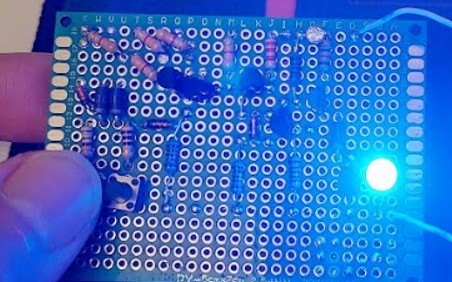
The circuit starts with an input stage using 4 clamping diodes to prevent voltage swings when the gate switches from high to low. The signal is then processed by the Schmitt trigger, which eliminates noise and defines transition thresholds using 4 resistors and 2 transistors. Next, the level shifter adjusts the voltage level for circuit compatibility, using 2 resistors, a diode, and a transistor. The signal then reaches the totem-pole output, which either pulls down or pulls up the signal based on the input, and finally drives the LED to indicate the output status.

